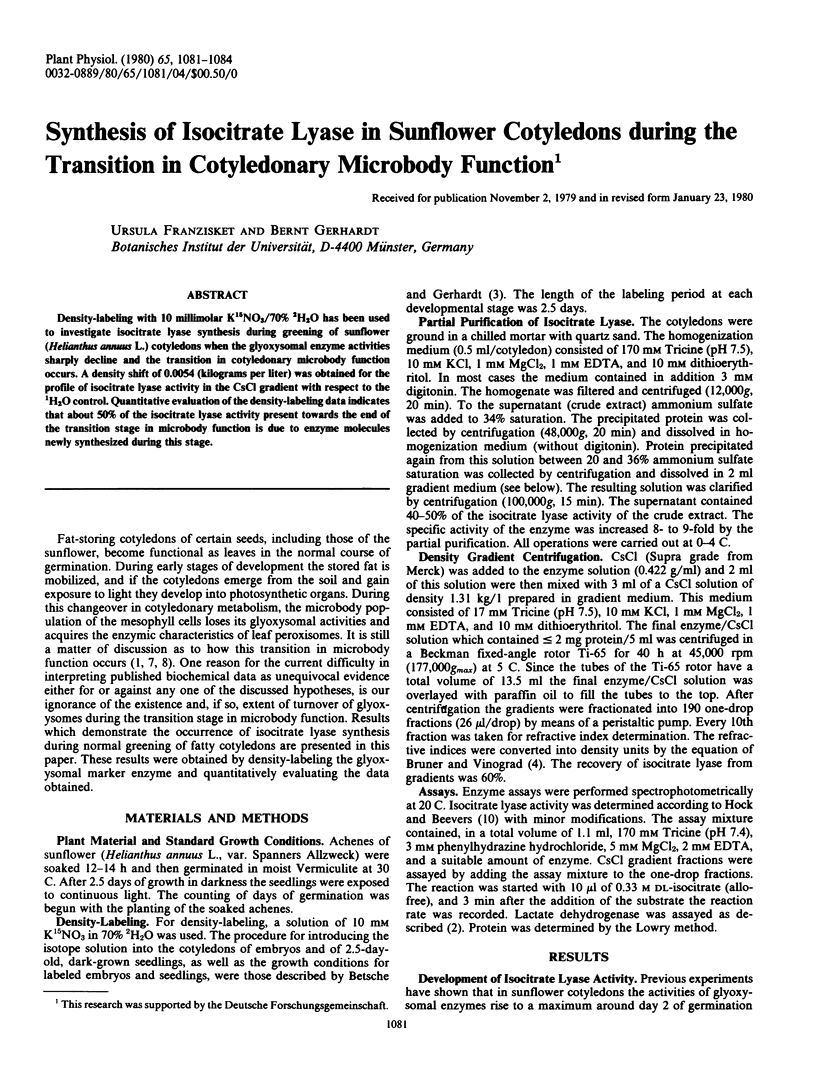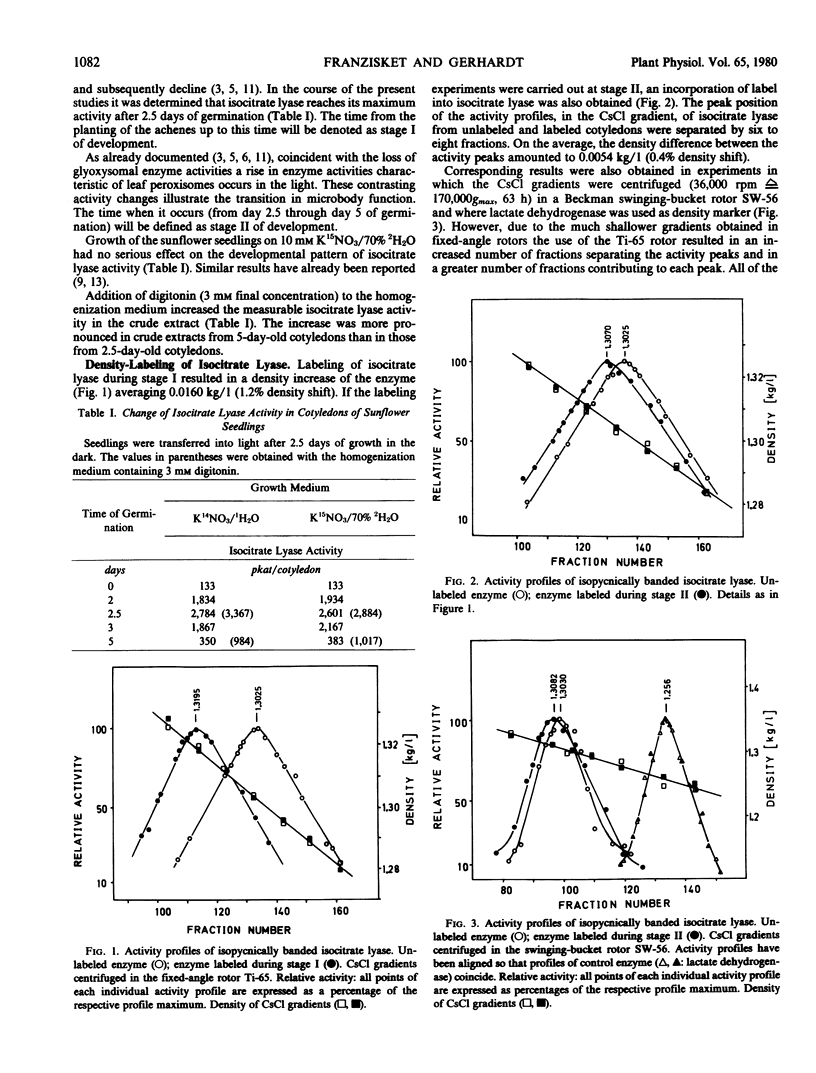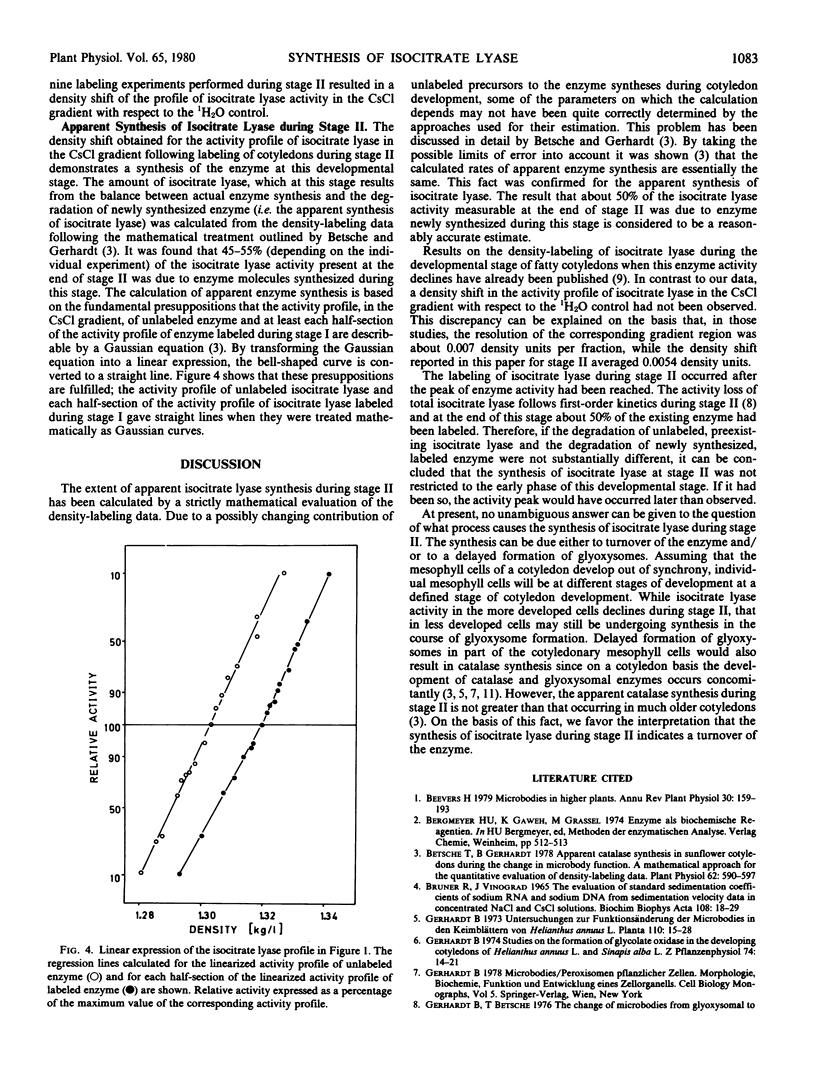Abstract
Density-labeling with 10 millimolar K15NO3/70% 2H2O has been used to investigate isocitrate lyase synthesis during greening of sunflower (Helianthus annuus L.) cotyledons when the glyoxysomal enzyme activities sharply decline and the transition in cotyledonary microbody function occurs. A density shift of 0.0054 (kilograms per liter) was obtained for the profile of isocitrate lyase activity in the CsCl gradient with respect to the 1H2O control. Quantitative evaluation of the density-labeling data indicates that about 50% of the isocitrate lyase activity present towards the end of the transition stage in microbody function is due to enzyme molecules newly synthesized during this stage.
Full text
PDF



Selected References
These references are in PubMed. This may not be the complete list of references from this article.
- Betsche T., Gerhardt B. Apparent Catalase Synthesis in Sunflower Cotyledons during the Change in Microbody Function: A Mathematical Approach for the Quantitative Evaluation of Density-labeling Data. Plant Physiol. 1978 Oct;62(4):590–597. doi: 10.1104/pp.62.4.590. [DOI] [PMC free article] [PubMed] [Google Scholar]
- Bruner R., Vinograd J. The evaluation of standard sedimentation coefficients of sodium RNA and sodium DNA from sedimentation velocity data in concentrated NaCl and CsCl solutions. Biochim Biophys Acta. 1965 Sep 6;108(1):18–29. doi: 10.1016/0005-2787(65)90104-8. [DOI] [PubMed] [Google Scholar]
- Theimer R. R., Anding G., Schmid-Neuhaus B. Density-labeling evidence against a de novo formation of peroxisomes during greening of fat-storing cotyledons. FEBS Lett. 1975 Sep 1;57(1):89–92. doi: 10.1016/0014-5793(75)80158-x. [DOI] [PubMed] [Google Scholar]


